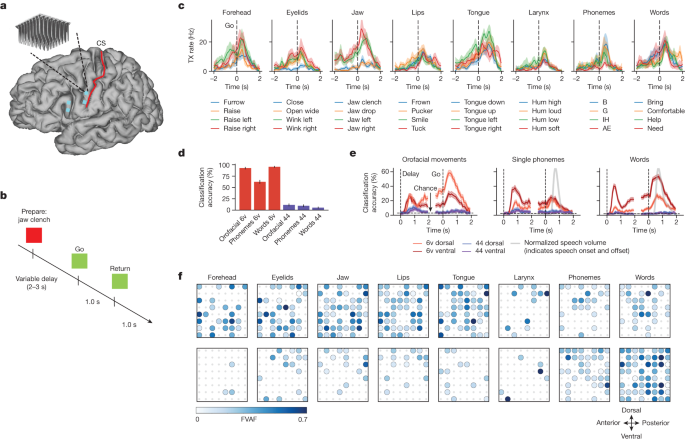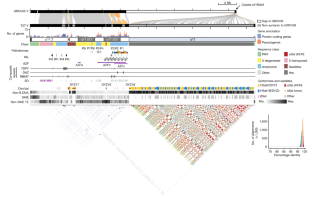2023-08-23 ブラウン大学
◆ALS患者の臨床試験参加者は、音声を発音できなくなりながらも、脳コンピュータインターフェース(BCI)を使用して1分間に62語を生成しました。これは、BCIを使用した以前の記録を3倍以上上回り、自然な会話の速さに近づいています。
◆この研究は、対麻痺の人々に迅速なコミュニケーションを回復させるための大きな進歩を示していますが、まだ実用化はされていない科学的な概念の証明です。
<関連情報>
- https://www.brown.edu/news/2023-08-23/decoding-speech
- https://www.nature.com/articles/s41586-023-06377-x
高性能な発話神経人工器官 A high-performance speech neuroprosthesis
Francis R. Willett,Erin M. Kunz,Chaofei Fan,Donald T. Avansino,Guy H. Wilson,Eun Young Choi,Foram Kamdar,Matthew F. Glasser,Leigh R. Hochberg,Shaul Druckmann,Krishna V. Shenoy & Jaimie M. Henderson
Nature Published:23 August 2023
DOI:https://doi.org/10.1038/s41586-023-06377-x

Abstract
Speech brain–computer interfaces (BCIs) have the potential to restore rapid communication to people with paralysis by decoding neural activity evoked by attempted speech into text1,2 or sound3,4. Early demonstrations, although promising, have not yet achieved accuracies sufficiently high for communication of unconstrained sentences from a large vocabulary1,2,3,4,5,6,7. Here we demonstrate a speech-to-text BCI that records spiking activity from intracortical microelectrode arrays. Enabled by these high-resolution recordings, our study participant—who can no longer speak intelligibly owing to amyotrophic lateral sclerosis—achieved a 9.1% word error rate on a 50-word vocabulary (2.7 times fewer errors than the previous state-of-the-art speech BCI2) and a 23.8% word error rate on a 125,000-word vocabulary (the first successful demonstration, to our knowledge, of large-vocabulary decoding). Our participant’s attempted speech was decoded at 62 words per minute, which is 3.4 times as fast as the previous record8 and begins to approach the speed of natural conversation (160 words per minute9). Finally, we highlight two aspects of the neural code for speech that are encouraging for speech BCIs: spatially intermixed tuning to speech articulators that makes accurate decoding possible from only a small region of cortex, and a detailed articulatory representation of phonemes that persists years after paralysis. These results show a feasible path forward for restoring rapid communication to people with paralysis who can no longer speak.


